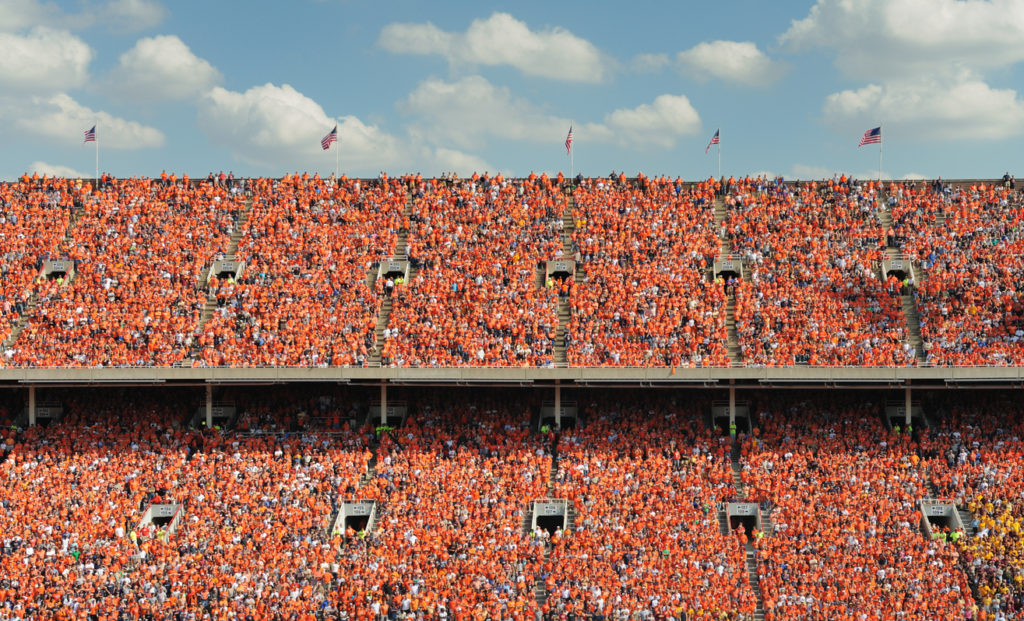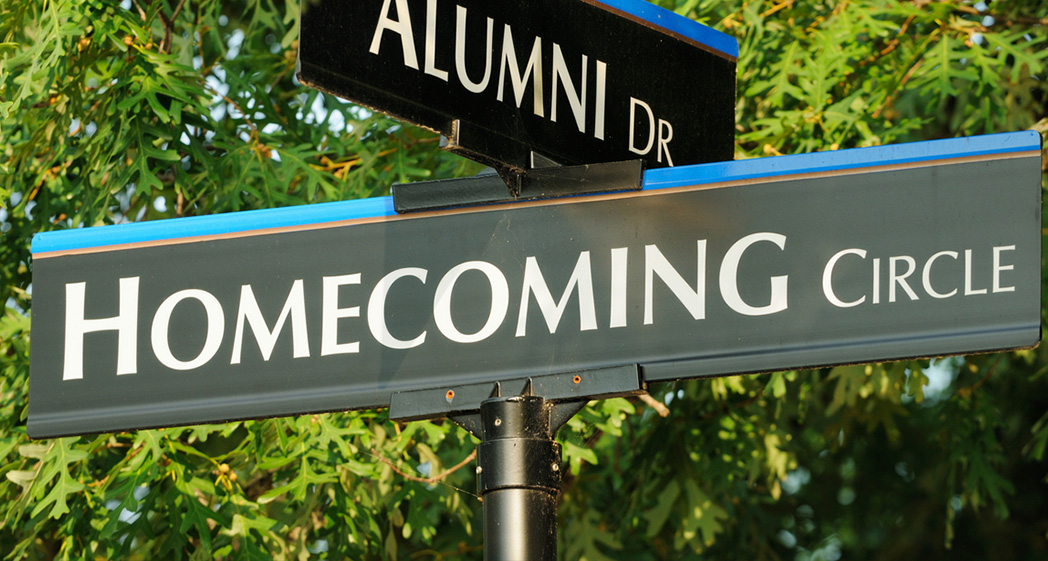For most colleges and universities, homecoming is among the most important dates on the yearly calendar; that makes strong homecoming organization vital. It’s more than just a day that includes some football; it’s a physical and symbolic union of past and present, all celebrating the best parts of the school together.
Technically, of course, homecoming is never just a single event. It’s a weekend, or sometimes even a full week, full of activities and smaller events that your current students, families, and alums can experience. Some universities even combine it with Family Weekend for current students.
At the same time, homecoming is also among the busiest days of the year on campus. As a result, parking is at a premium, and traffic can easily become congested. Also, there’s the issue with alums from 20+ years coming back to campus and finding few buildings or locations where they were in the 20th century.
For the alumni office and student affairs organizers around homecoming, all these variables have the potential to become immensely stressful. Fortunately, they don’t have to be. With the help of an interactive map, you can improve your next big day on campus with homecoming organization strategies for everyone’s benefit.
1. Organize All Homecoming Events Under a Single Umbrella
Here’s what every organizer of homecomings past and present knows: what tends to be one of the most fun weekends of the year is also among the most complicated to plan, given the influx of guests on campus and the variety of both audiences and organizers. But if it’s complicated for the organizers, imagine how complex it can feel for visitors who just want to come back for a few days or an afternoon for a good time.
Not every alum returning to campus is interested in the same thing. Some prefer tailgating, while others just want to see the parade. Yet others may be there for the more formal event, like alumni awards or class reunions. Each of them needs to be able to easily find what they’re looking for with a quick glance.
One solution to that challenge is an interactive map category that’s dedicated to homecoming. Within that category, you can include individual items like:
- Relevant parking lots and areas for the individual events
- The locations most relevant to alumni audiences returning to campus, like the alumni center
- A self-guided tour of the campus
- Sporting locations and relevant information, like a tailgating area marked for the homecoming game
The category, and individual items within it, can then be used as a central hub for many related communications. Linking to it from the university homepage, alum reminder emails, and even social media allows universities to be both clear and straightforward about what’s happening. Then you can guide audiences in the right direction at all times.
2. Showcase All Relevant Events Directly on the Map
Of course, you can also go further in making that homecoming connection to the many individual events happening on campus that weekend or week. Depending on your map solution, you might be able to directly showcase these individual events, along with in-depth information on them, on a location marker for where they will be happening.
For example, Concept3D integrates fully with the event management software Localist, allowing colleges and universities to directly link any events in the system to their interactive digital map. Texas A&M University-Kingsville took that route, displaying events in chronological order with an emphasis on the current day while also looking further out.
That example perfectly highlights the strong points of integrating your map and event management. Users can easily see an overview of all upcoming events or filter down to only those most relevant to them. A spot on the map (and the necessary directions to get there) makes wayfinding easy. At the same time, the description can display more in-depth event details.
In the context of homecoming, this way of highlighting events makes even more sense. Visitors can now pull up any event on their mobile device, navigating there while keeping the next spot in mind. As a result, what might otherwise be a complicated weekend becomes significantly more simple.
3. Create Individual Sections for Standout Events

Of course, not all happenings are equal when it comes to homecoming organization. The football game and parade often take on outsized meaning to audiences looking to enjoy themselves in and around their alma mater.
For these events, a plethora of information becomes even more vital. For example, Penn State University welcomes more than 150,000 visitors to campus for its annual homecoming celebrations. More than 110,000 of those visitors attend the homecoming football game. To help with planning and improve the guest experience, the university has created a map category specifically for football gameday visitors that includes:
- Parking zones, including cash parking options and preferred or reserved parking options
- Beaver Stadium, including gate-specific wayfinding information
- Shuttle stops for further-away parking areas, as well as ADA shuttle options
- Rideshare options for visitors choosing to use a taxi or ridesharing service like Uber or Lyft
- Gameday experience locations like the team arrival spot, fanfest, and guest services
As another college football powerhouse, the University of Alabama has created a football gameday category that includes many of the same areas. But it also adds tailgating zones and public restrooms for fans looking to find either spot. The goal remains the same: highlight the biggest events in the way they deserve, making the experience as easy as possible for the thousands of homecoming visitors.
4. Seamlessly Guide Traffic Around Campus and Construction Sites
College campuses are living and breathing, with a near-constant effort to improve and renovate or build new buildings. Sometimes, the construction is more functional, like replacing water pipes or replacing sidewalks near important roads.
Most universities, of course, plan their construction cycle around offering as little complication as possible for major events like homecoming. But some construction is inevitable, like the multi-year construction of a new welcome center or residence hall, and this can disrupt homecoming organization efforts.
In those cases, communication becomes essential. Helping visitors understand and navigate around construction sites can go a long way towards improving their experience as they visit, whether they’re finding a parking spot or exploring the campus on the way from one event to the next.
Once again, a virtual map can go a long way toward achieving that goal. It can highlight current construction areas, not just showing the current hindrance but also helping visitors imagine what the space will look like. With a simple overlay, visitors will have a better understanding of where to go and how to get there.
5. Create a Homecoming Walking Tour for Returning Alumni
The week of homecoming tends to be exciting and unusual across campus, not just because of the events but because of the unexpected visitors that start to pop up as the big weekend gets closer. Everyone who works in a historic campus building knows the feeling of catching an alum strolling the halls and reminiscing about their own time there.
Most alumni offices, of course, know to build on that nostalgia while planning out their homecoming organization. Historical events and even tours are frequent features of homecoming organization and planning for that exact reason. But that nostalgia can be enhanced even further by offering self-service options for alums to explore the campus and remember their own time at school.
For example, consider a self-guided walking tour within your interactive campus map solution that alums can follow when they’re on campus. Each stop could highlight the current building or campus spot and its history and significance since the university’s founding.
A tour like this can be complex to build, requiring significant research and planning for it to make sense as alums walk it. But, at the same time, it can also be beneficial far beyond homecoming organization; when constructed well, alums can see and experience it even from the comforts of their own computers throughout the year.
Ready to Leverage Your Interactive Map for Improved Homecoming Organization This Year?
An interactive campus map can have immense potential. Yes, it remains a wayfinding tool at its core; this alone can make a massive difference for alums coming back to campus to visit their alma mater by the thousands. But that doesn’t have to limit its potential. In fact, wayfinding possibilities can help to create a structure of information that everyone on campus can benefit from.
The examples throughout this guide go a long way toward explaining that concept. Showcasing events by location and timing, guiding traffic around construction sites, highlighting major events, and creating a homecoming walking tour are only some of the many possibilities available with the right solution. The goal is to impact how your alumni visitors will experience the campus during one of the most important weekends of the year.
Of course, you need the right solution. That’s where Concept3D comes in. Our map solution has helped countless schools improve their campus wayfinding, including homecoming-specific possibilities. We’re ready to help you make those same improvements, as well. Contact us to start the conversation about maps and homecoming organization today.
Interested in learning how we have helped over 675 campuses streamline their communication?

